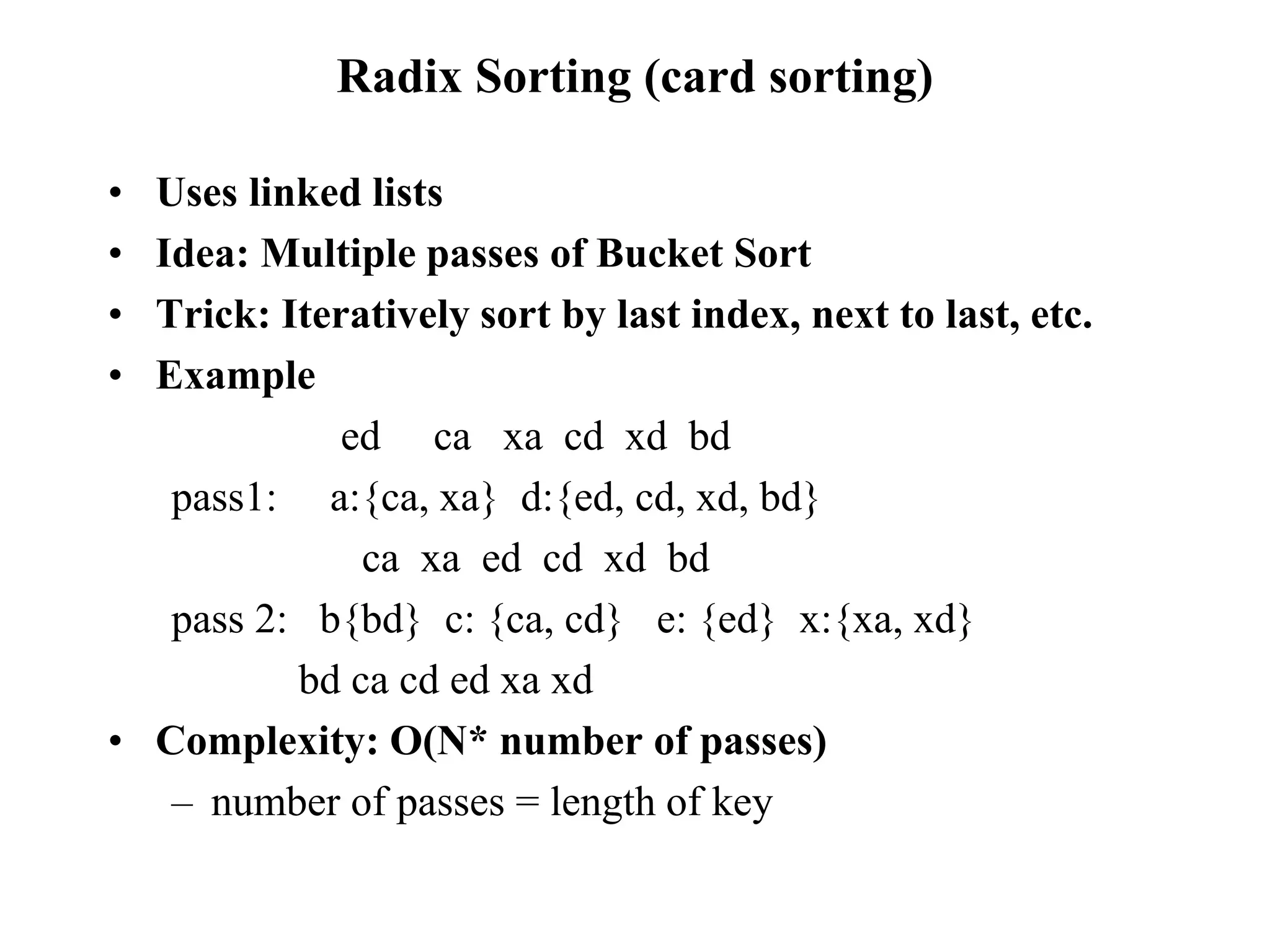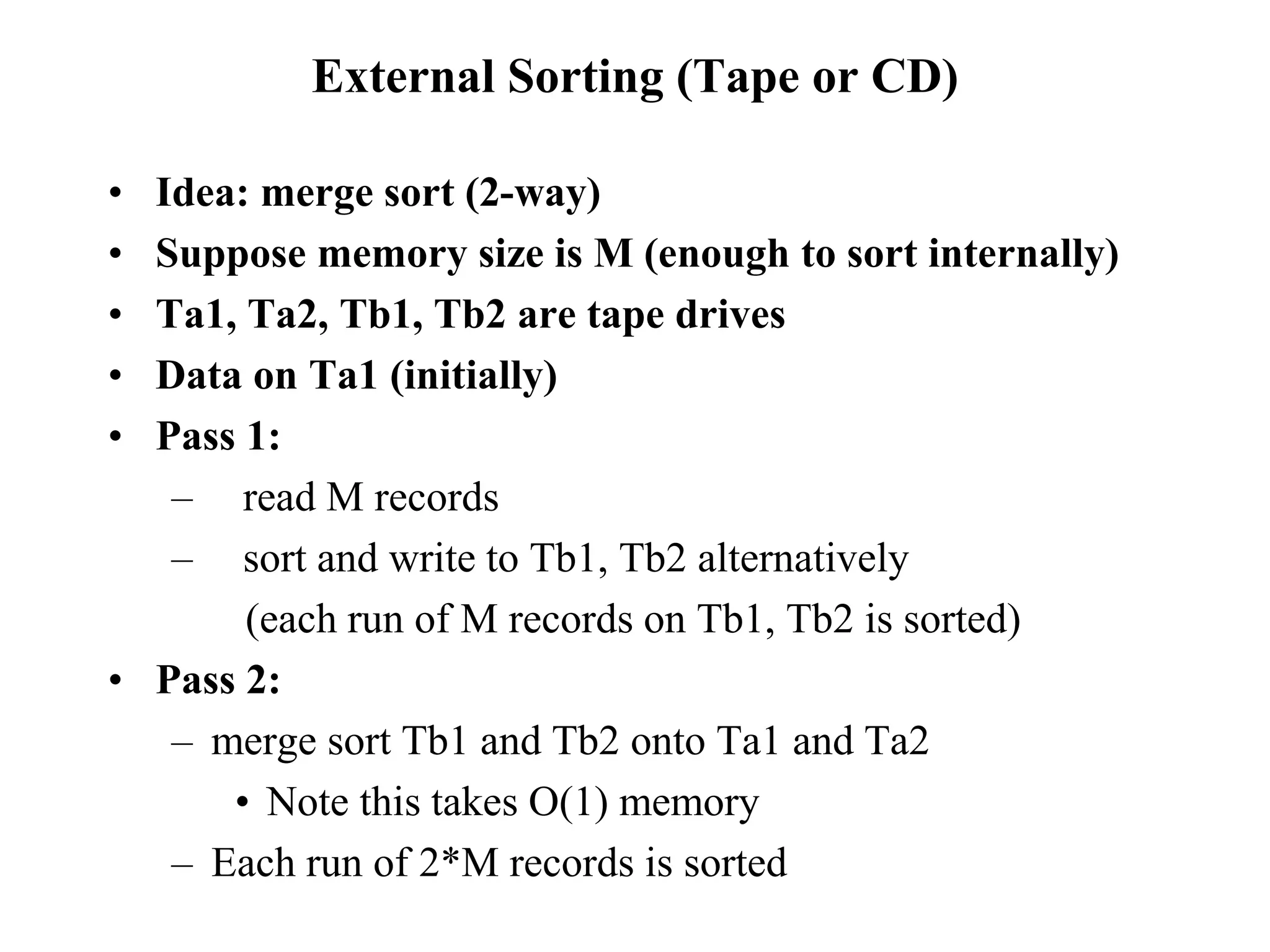The document discusses various sorting algorithms and their analysis. It begins by explaining insertion sort and analyzing its best, worst, and average cases. It then discusses the concept of inversions and how they relate to sorting complexity. Other algorithms covered include bubble sort, merge sort, quicksort, quickselect, bucket sort, radix sort, and external sorting. A key takeaway is that quicksort and mergesort run in O(n log n) time on average, which is optimal for comparisons-based sorting. External sorting can sort data that does not fit in memory.
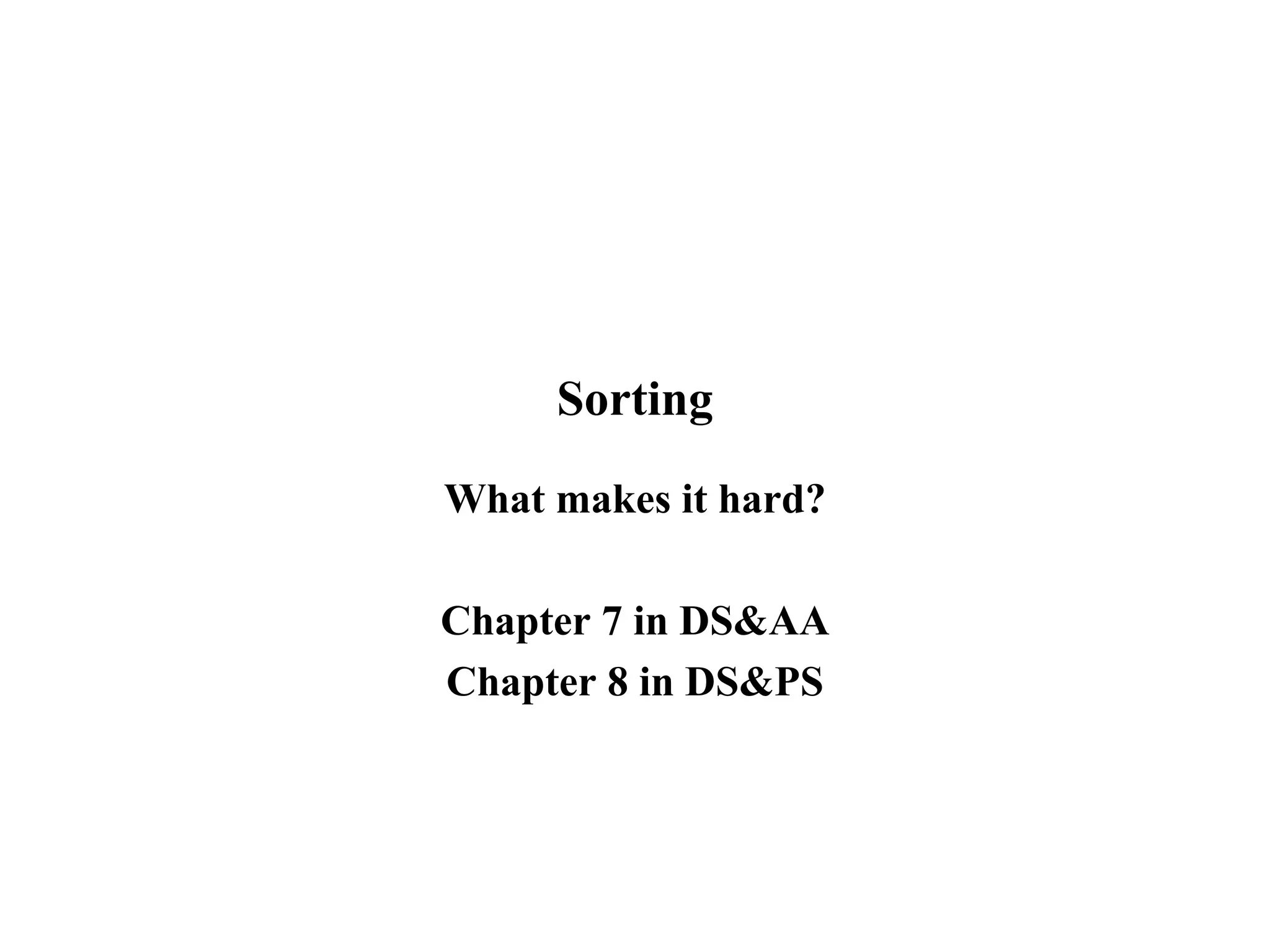
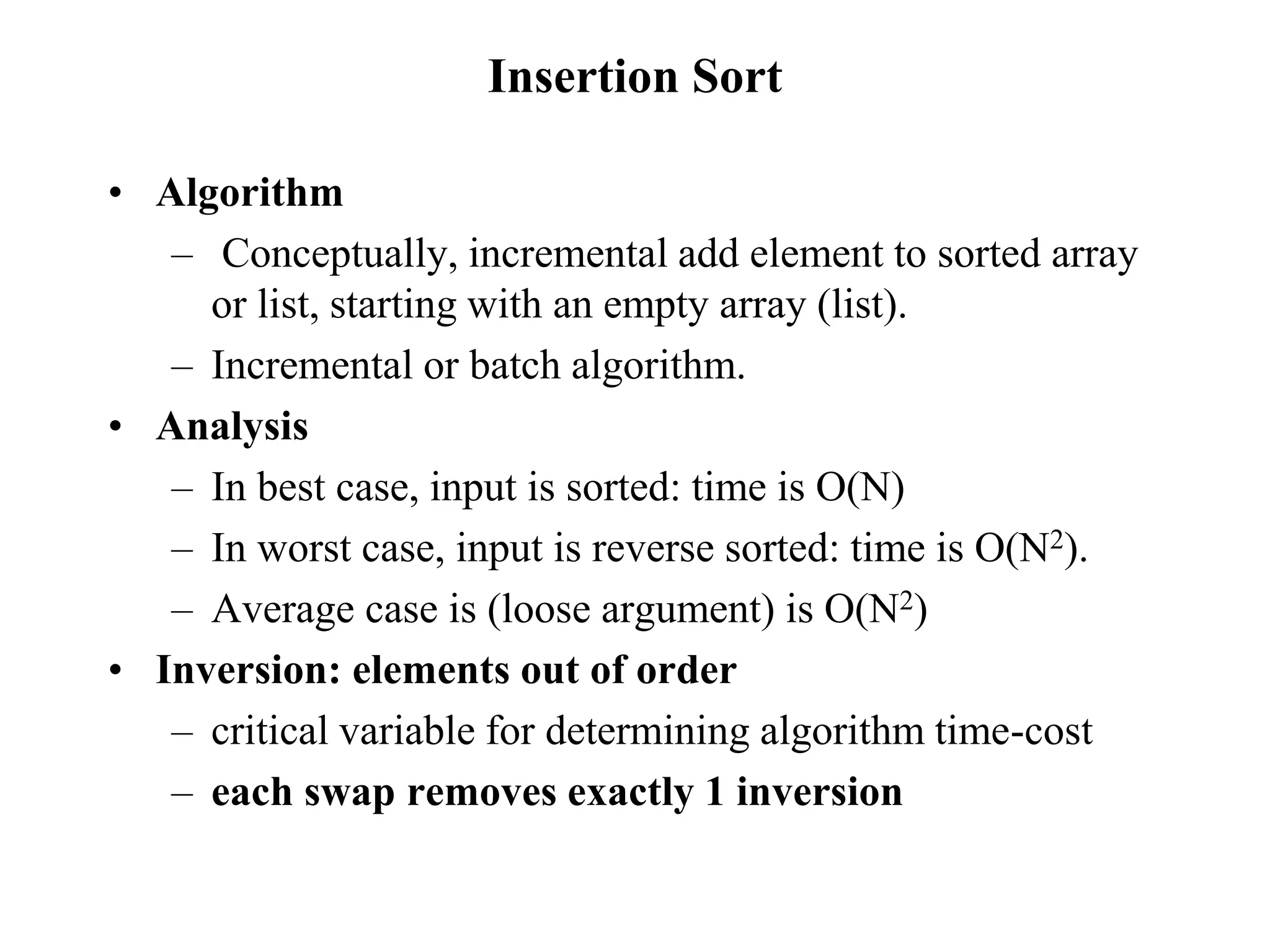
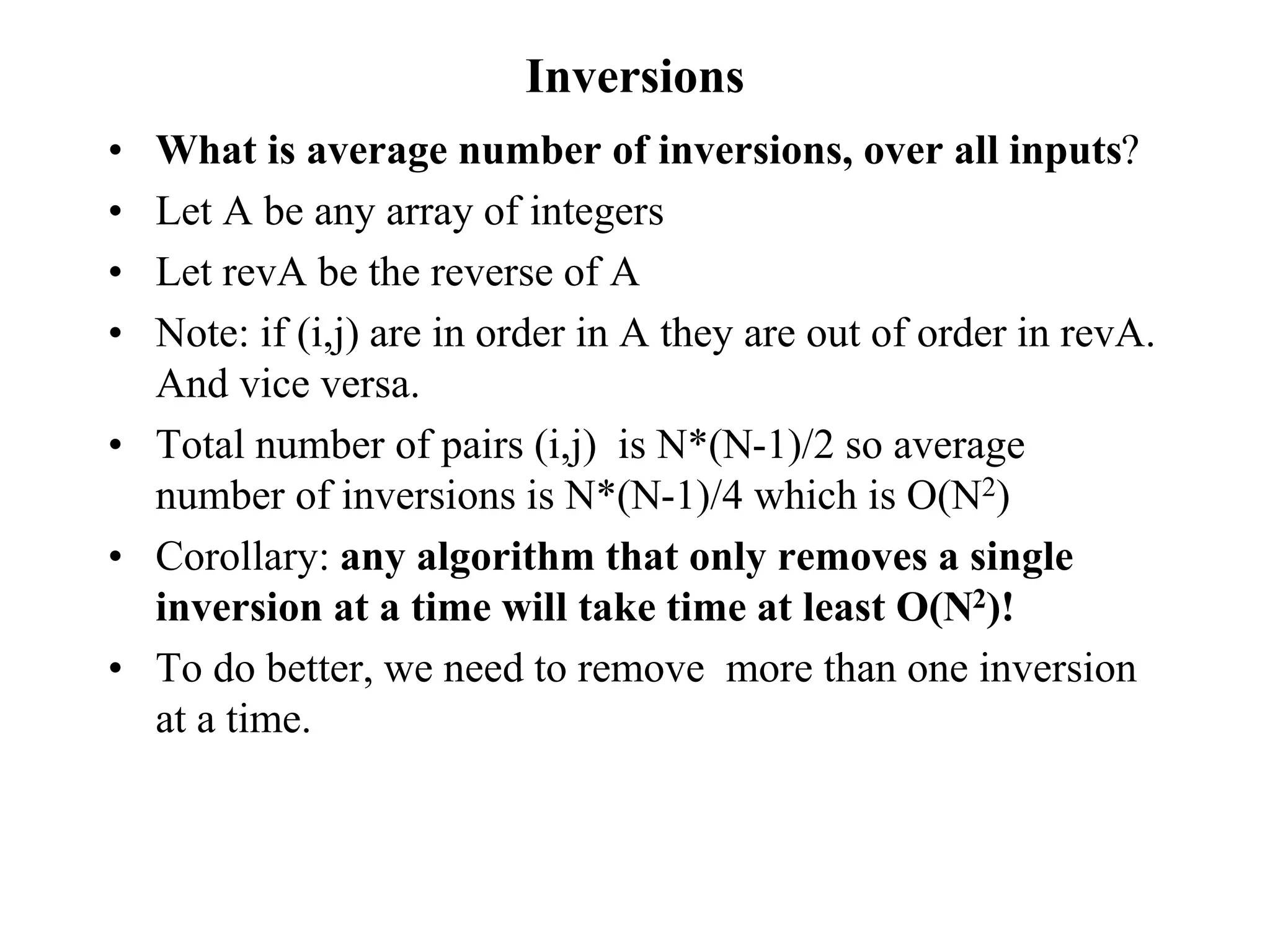
![BubbleSort
• Most frequently used sorting algorithm
• Algorithm:
for j=n-1 to 1 …. O(n)
for i=0 to j ….. O(j)
if A[i] and A[i+1] are out of order, swap them
(that’s the bubble) …. O(1)
• Analysis
– Bubblesort is O(n^2)
• Appropriate for small arrays
• Appropriate for nearly sorted arrays
• Comparision versus swaps ?](https://image.slidesharecdn.com/quicksort-140403005717-phpapp02/75/Quicksort-4-2048.jpg)
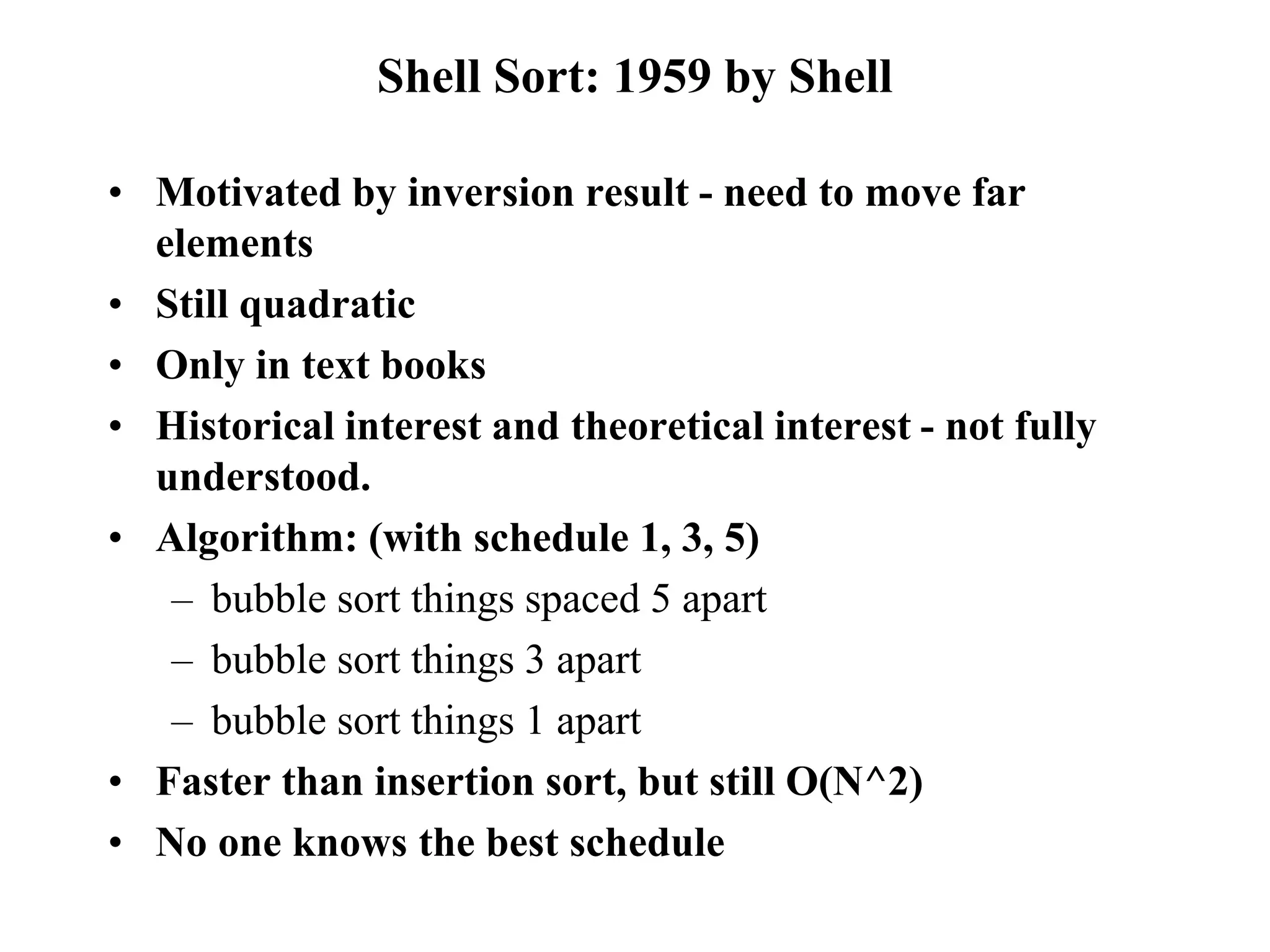
![Divide and Conquer: Merge Sort
• Let A be array of integers of length n
• define Sort (A) recursively via auxSort(A,0,N) where
• Define array[] Sort(A,low, high)
– if (low == high) return
– Else
• mid = (low+high)/2
• temp1 = sort(A,low,mid)
• temp2 = sort(A,mid,high)
• temp3 = merge(temp1,temp2)](https://image.slidesharecdn.com/quicksort-140403005717-phpapp02/75/Quicksort-6-2048.jpg)
![Merge
• Int[] Merge(int[] temp1, int[] temp2)
– int[] temp = new int[ temp1.length+temp2.length]
– int i,j,k
– repeat
• if (temp1[i]<temp2[j]) temp[k++]=temp1[i++]
• else temp[k++] = temp2[j++]
– for all appropriate i, j.
• Analysis of Merge:
– time: O( temp1.length+temp2.length)
– memory: O(temp1.length+temp2.length)](https://image.slidesharecdn.com/quicksort-140403005717-phpapp02/75/Quicksort-7-2048.jpg)
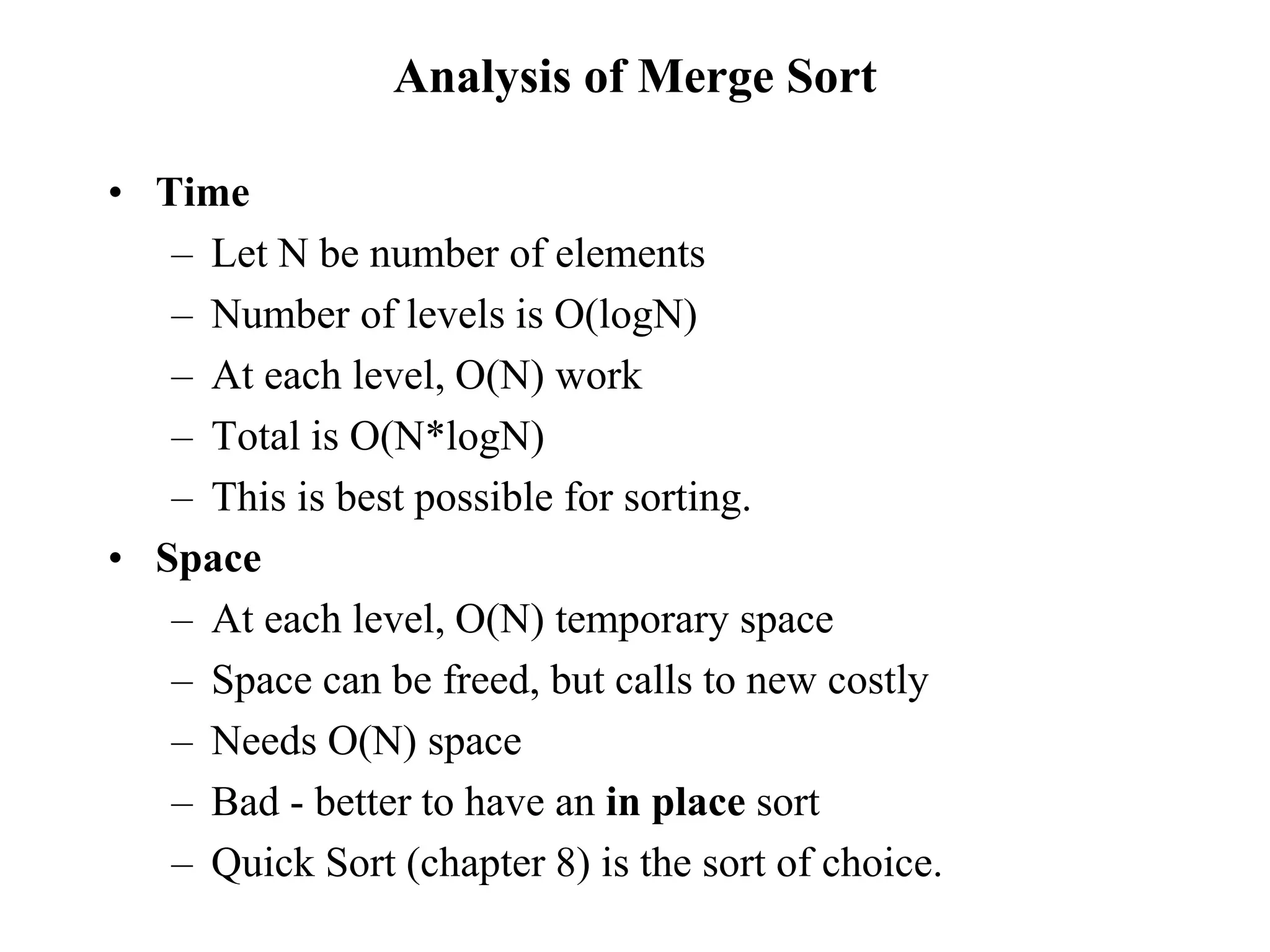
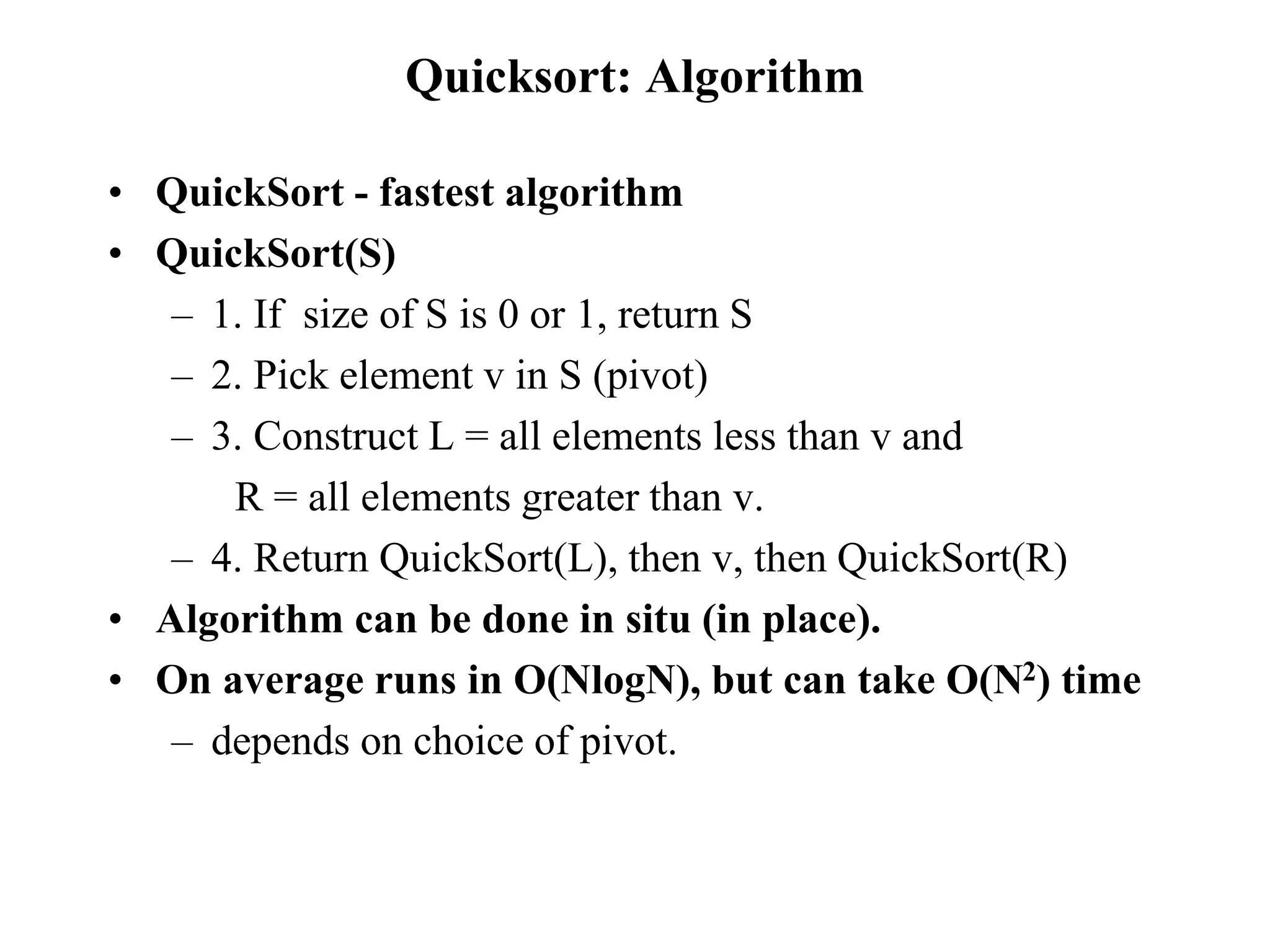
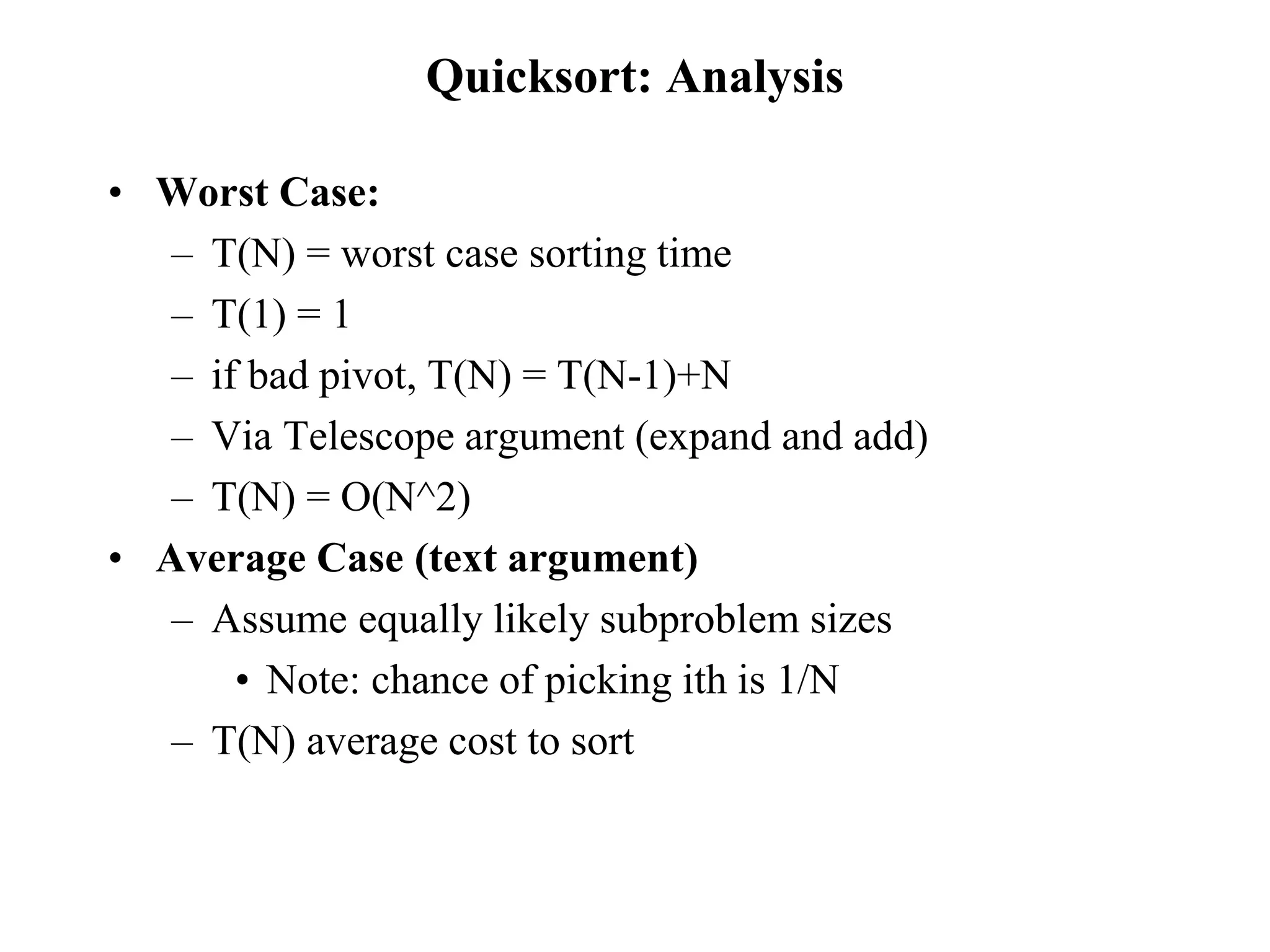
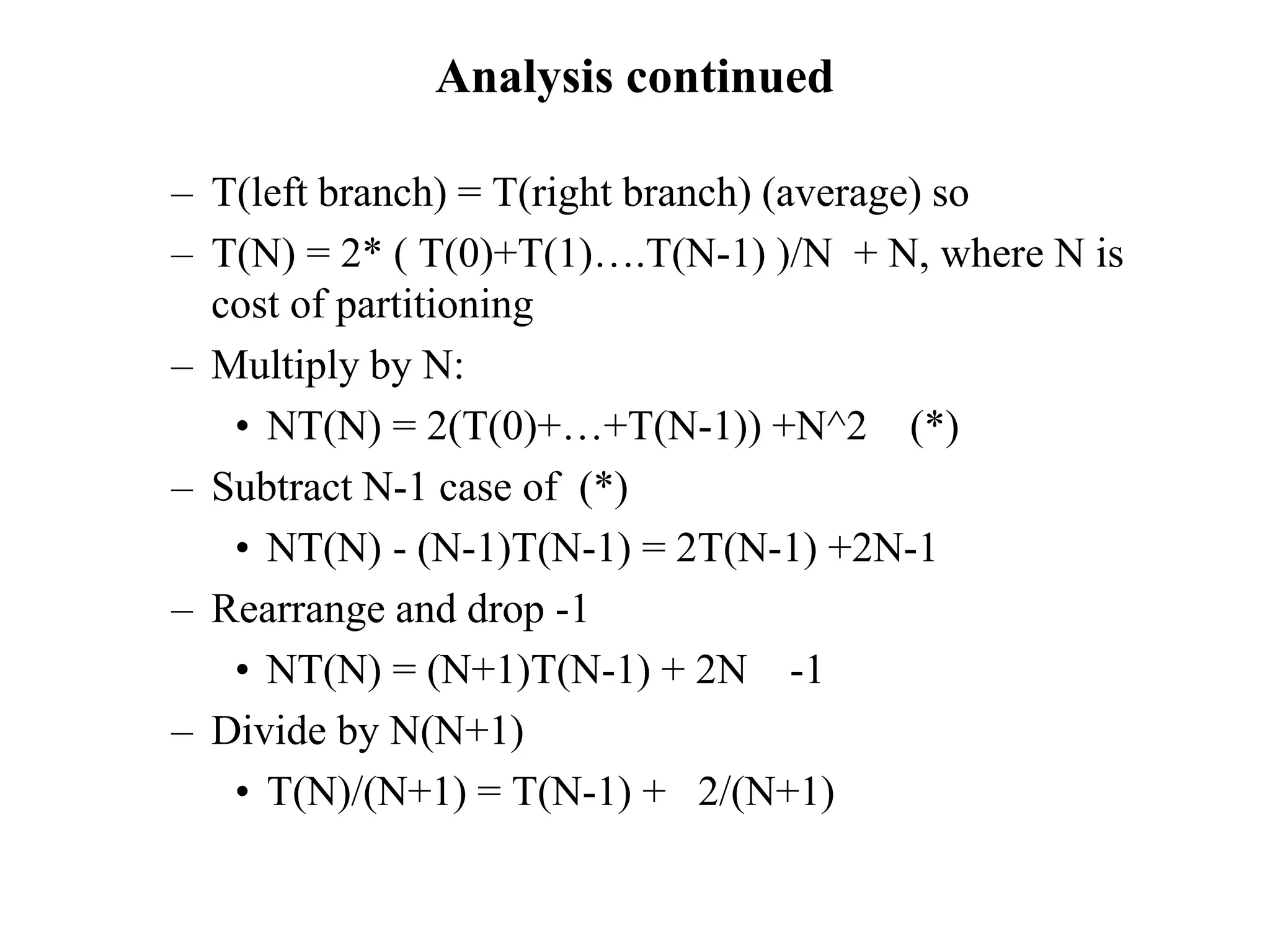
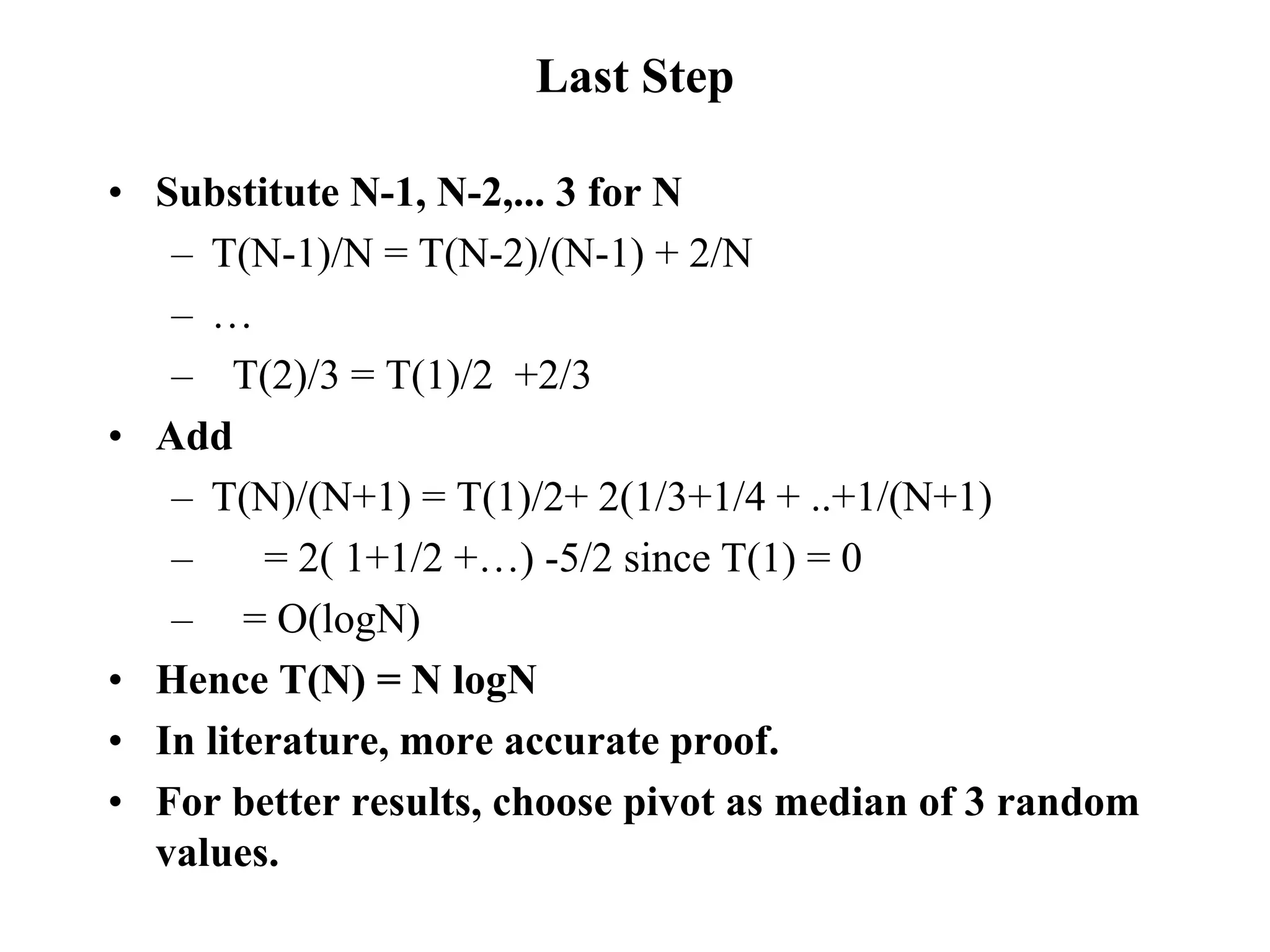
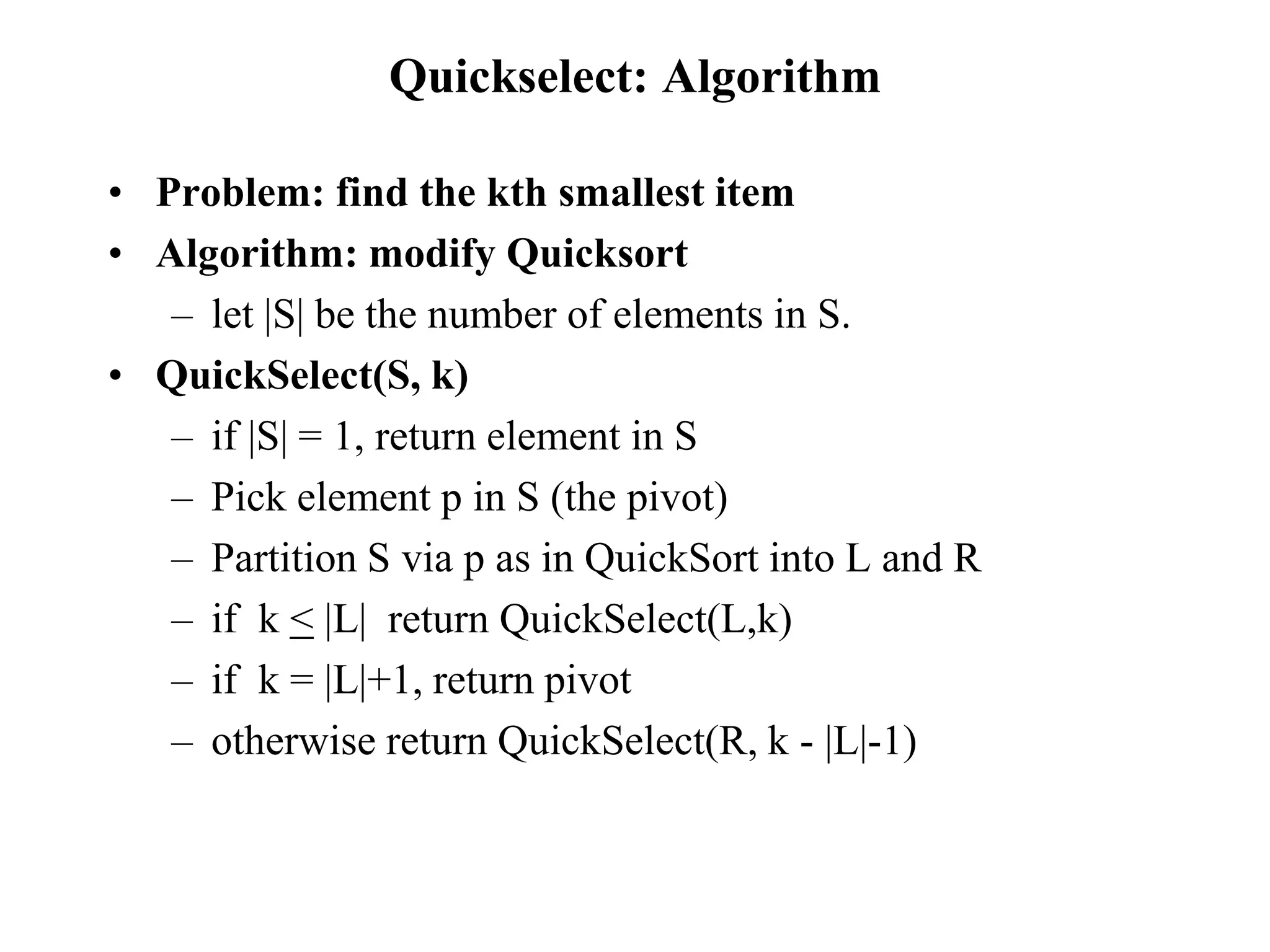

![Bucket Sort
• A linear time sort algorithm!
• Need to know the possible values.
• Example 1: to sort N integers less than M.
– Make array A of size M
– Read each integer i and update, A[i]++
• Example 2: 200 names
– make array of size 26*26 = 676
– Using first 2 letters of each name, put it in [char-char]
bucket (usually a short ordered linked list)
– Collect them up](https://image.slidesharecdn.com/quicksort-140403005717-phpapp02/75/Quicksort-15-2048.jpg)
